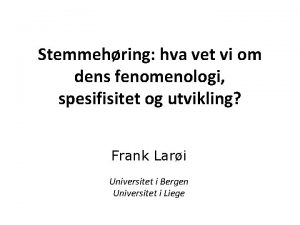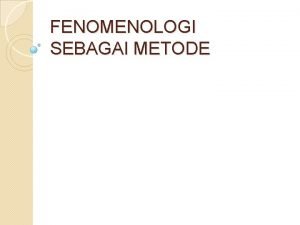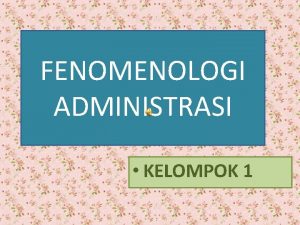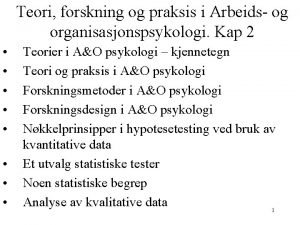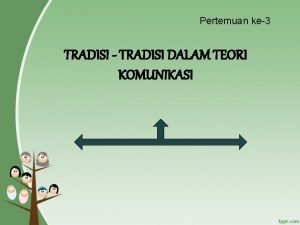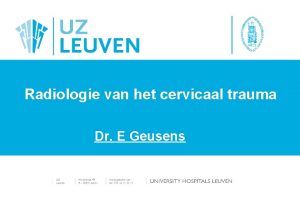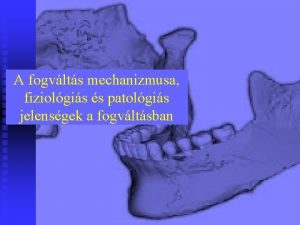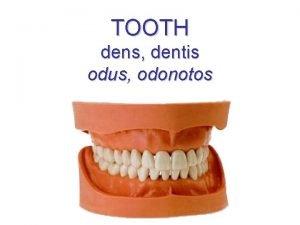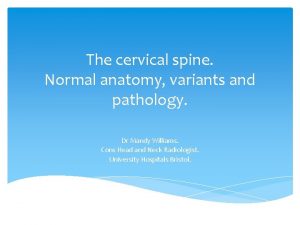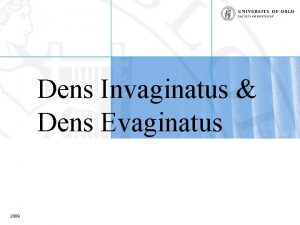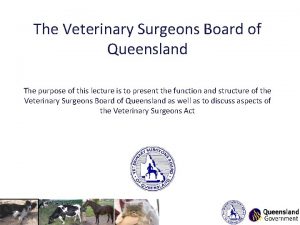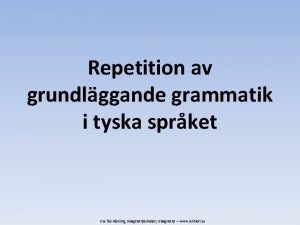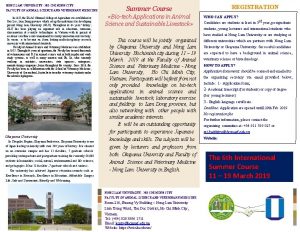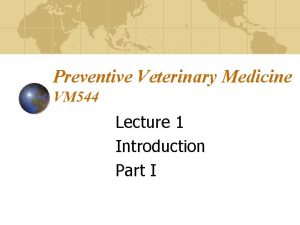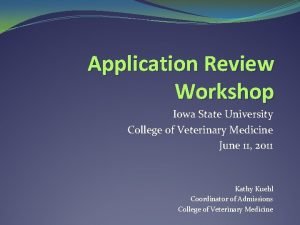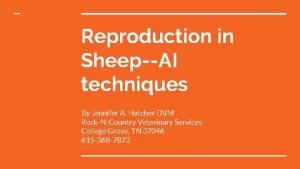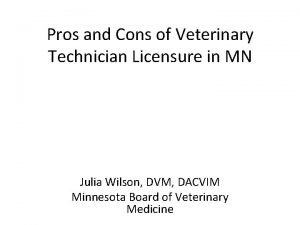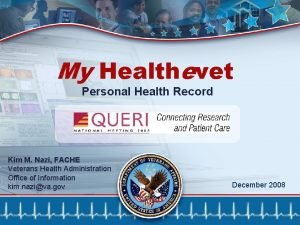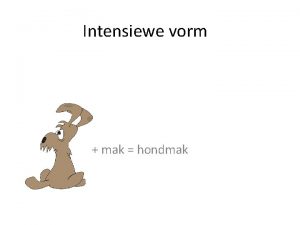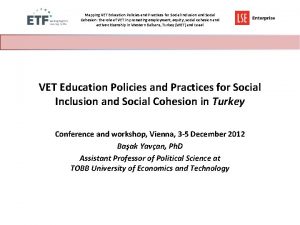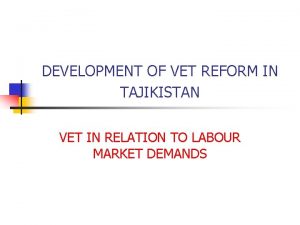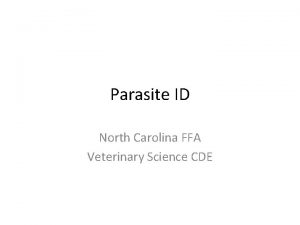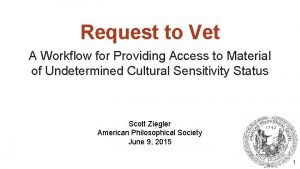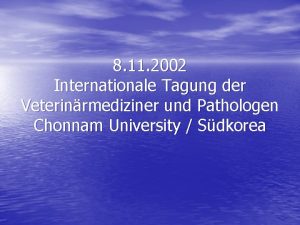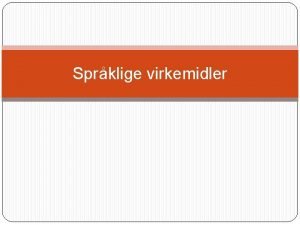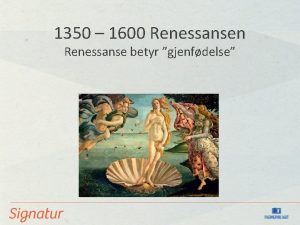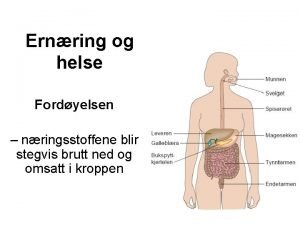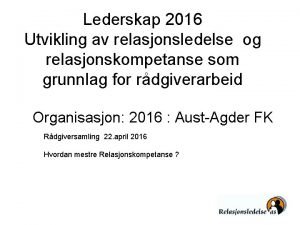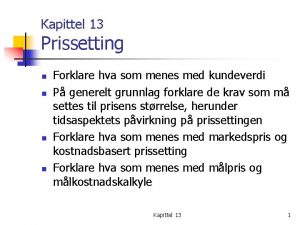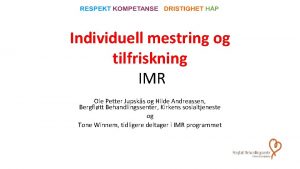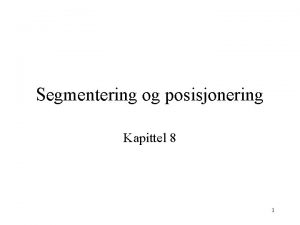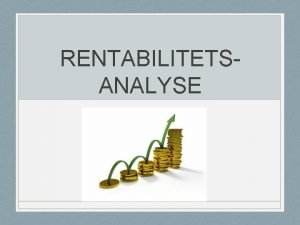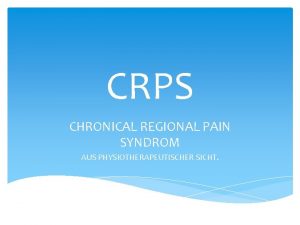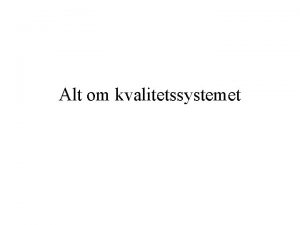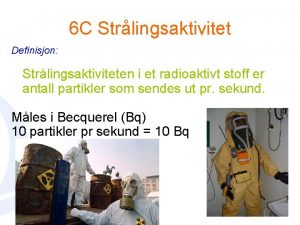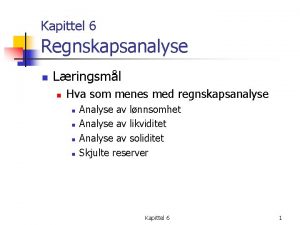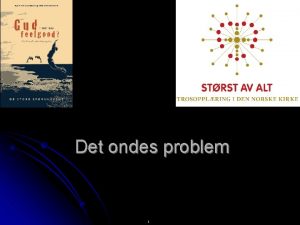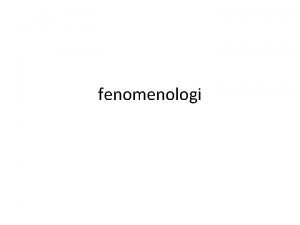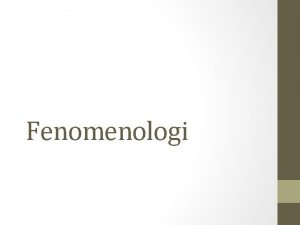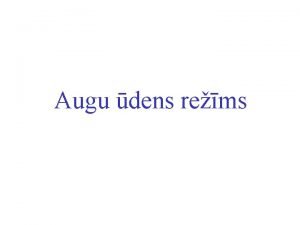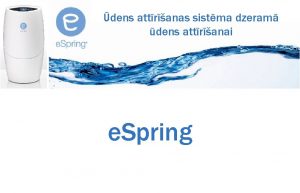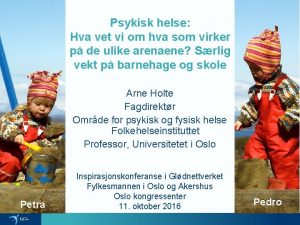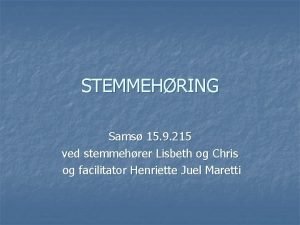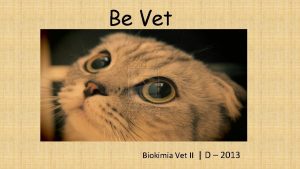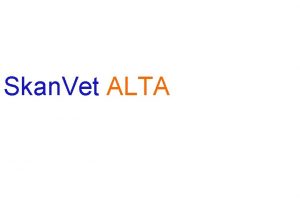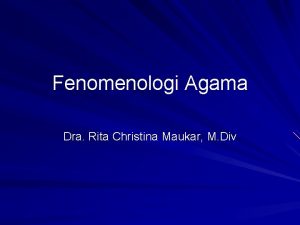Stemmehring hva vet vi om dens fenomenologi spesifisitet







































































































- Slides: 103

Stemmehøring: hva vet vi om dens fenomenologi, spesifisitet og utvikling? Frank Larøi Universitet i Bergen Universitet i Liege

• Definition: A false sensory perception that has a compelling sense of reality despite the absence of an external stimulus (APA Dictionary of Psychology)

• Definition: A false sensory perception that has a compelling sense of reality despite the absence of an external stimulus (APA Dictionary of Psychology) – David (2004): • over which the subject does not feel s/he has direct and voluntary control • which occurs in the awake state

• How are hallucinations conceptualized at present? – Not necessarily as a sign of a mental disorder nor of a pathology – Not necessarily as a strange or bizarre phenomenon but as a phenomenon that we can try to explain – There a great number of reasons why people experience hallucinations (multidimensional models, multiple pathways, etc. )

• The nature of hallucinations, philosophical contributions – Hallucinations are not a perception: • Hallucinations are uni-sensorial; Perceptions are always multi-sensorial • A perception always involves an object

• Hallucinations: – Extremely rich • Modalities (auditory, visual, olfactory, gustative, musical, multimodal, etc. )

• Hallucinations: – Extremely rich • Modalities (auditory, visual, olfactory, gustative, musical, multimodal, etc. )

– Acoustic properties – Linguistic properties – Frequency – Control – Inner-outer localisation – Personification – Appraisals – Content

– Acoustic properties – Linguistic properties – Frequency – Control – Inner-outer localisation – Personification – Appraisals – Content

• Phenomenology of hallucinations – Variable • Inter-individual variation • Intra-individual variation (e. g. according to clinical state)

• Phenomenology of hallucinations – Variable • Inter-individual variation • Intra-individual variation (e. g. according to clinical state) • Jones (2010) • “Dynamic Developmental Progression” • AVHs tend to evolve over time – change in the nature of the AVHs – change in the distress/beliefs associated with AVHs • No good studies here

• Phenomenology of hallucinations – Complex

• Hallucinations as «voices» – Not always a good metaphor – Moritz & Larøi (2008): • 37%: hallucinations are not like real voices

• E Kraepelin, Clinical Psychiatry: A textbook for students and physicians (1902)

• Phenomenology of hallucinations – Heterogeneity

• Jones (2010) • Prima facie heterogeneity of AVHs – « … AVH … may involve single and/or multiple voices, who may be known and/or unknown, speaking sequentially and/or simultaneously, in the first, second, and/or third person and which may give commands, comments, insults, or encouragement »

• Several types / subgroups of AVHs? – Mc. Carthy-Jones et al. (2014) – Cluster analysis on 199 patients: 1. Short that repeat themselves (commands, commentaries) – Obsessional thoughts? 2. Content identical to words/conversations from the past – Form of « flash-backs » as in PTSD? 3. Very similar to own thoughts (e. g. in 1 st person)

Clinical groups and hallucinations • Clearly a common symptom in schizophrenia (50 -80%)

Clinical groups and hallucinations • Clearly a common symptom in schizophrenia (50 -80%) • BUT…


Aleman & Larøi (2008)

Aleman & Larøi (2008)

Aleman & Larøi (2008)

• Challenges the idea that hallucinations are necessarily a sign of psychosis

• Healthy, “non-clinical” persons may also have this experience – Children, adolescents, adults, elderly

• Healthy, “non-clinical” persons may also have this experience – Children, adolescents, adults, elderly

• Healthy, “non-clinical” persons may also have this experience – Children, adolescents, adults, elderly • Beavan et al. (2011), review paper – 17 studies; N = ± 70, 000 persons in total – 5 -15% of the general population hears voices

• N = 2533; 18 years or older • 7. 3% life-time prevalence of AVH

• Challenges the idea that hallucinations are necessarily a sign of pathology

Continuum hypothesis of hallucinations • No qualitative differences between « clinical » and « nonclinical » hallucinations – But rather mainly quantitative differences – In hallucinations as in other psychopathological experiences/conditions (delusions, dissociation, depression, social phobia, etc. )

Nonclinical N O R M A L Clinical Hallucinations P A T H O

Aleman & Larøi (2008)

Aleman & Larøi (2008)

• van Os et al. (2000) : – 6. 2% : subclinical (no distress or help-seeking behaviour) – 1. 7% : clinically relevant (associated with distress and help-seeking behaviour)

• Healthy, “non-clinical” persons may also have this experience – Children, adolescents, adults, elderly

• Children: – Mc. Gee et al. (2000): 8% hallucinations prevalence in children

Aleman & Larøi (2008)

Stop spontaneously Persist but with no impact Hallucinations childhood Persist but with impact (development of psychopathology)

Stop spontaneously: 76% (12 -13 y. o. ) 5 years Hallucinations childhood (7 -8 y. o. ) Bartels-Velthuis et al. (2011)

Stop spontaneously: 59 -95% (after some weeks/months) • Rubio et al. (2102): Review paper (11 studies) Hallucinations childhood

Stop spontaneously: 59 -95% (after some weeks/months) • Rubio et al. (2102): Review paper (11 studies) Hallucinations childhood • Jardri et al. (2014): “…most nonpsychotic hallucinations are associated with periods of anxiety and stressful events and disappear when the stressful situation is resolved”

Stop spontaneously Persist but with no impact Hallucinations childhood Persist but with impact (development of psychopathology) Mood disorders Psychotic disorders Substance disorders PTSD Social phobia

Stop spontaneously Persist but with no impact Hallucinations childhood Persist but with impact (development of psychopathology) 7. 4% developed a psychotic disorder Lindscott & van Os (2013)

• Healthy, “non-clinical” persons may also have this experience – Children, adolescents, adults, elderly

Aleman & Larøi (2008)


19 -30 yrs 31 -60 yrs 61 -96 yrs


Nonclinical N O R M A L Clinical Hallucinations P A T H O

Schizophrenia with hallucinations Hallucinations frequently with other disorders Hallucinations frequently Hallucinations sometimes/rarely (particular contexts)

Schizophrenia with hallucinations ? Hallucinations frequently with other disorders ? Hallucinations frequently ? Hallucinations sometimes/rarely (particular contexts)

Schizophrenia with hallucinations Person A Hallucinations frequently with other disorders Hallucinations frequently Hallucinations sometimes/rarely (particular contexts)

Schizophrenia with hallucinations Person B Hallucinations frequently with other disorders Hallucinations frequently Hallucinations sometimes/rarely (particular contexts)

• Possible approaches to better elucidate this process: – Combined epidemiological and longitudinal studies • Nature of the transition from a non-clinical hallucination to a clinical hallucination – Compare AVHs in patients and non-patients (voicehearers) • Differences: factors and mechanisms involved in developing problematic AVHs, but also “protective” mechanisms and factors that help prevent someone from developing problematic AVHs – Detailed assessment of changes in mental experiences that occur before AVHs develop, especially during early (i. e. , prodromal) phases of psychosis

• Possible approaches to better elucidate this process: – Combined epidemiological and longitudinal studies • Nature of the transition from a non-clinical hallucination to a clinical hallucination – Compare AVHs in patients and non-patients (voicehearers) • Differences: factors and mechanisms involved in developing problematic AVHs, but also “protective” mechanisms and factors that help prevent someone from developing problematic AVHs – Detailed assessment of changes in mental experiences that occur before AVHs develop, especially during early (i. e. , prodromal) phases of psychosis

• Krabbendam et al. (2005): Longitudinal and epidemiological study – 4670 participants, followed-up 1 & 3 years after (1) High hallucination proneness (2) + Mediating factors a) negative emotions (anxiety, distress, depressed mood) b) [tendency to experience delusions] -----------------------------= significantly increases the risk of becoming a “clinical case”

• It is not the nature of hallucinations in itself that determines if a person becomes a « clinical case » but rather how the person reacts emotionally/psychologically to these experiences

Kaymaz & Van Os (2010)

• Possible approaches to better elucidate this process: – Combined epidemiological and longitudinal studies • Nature of the transition from a non-clinical hallucination to a clinical hallucination – Compare AVHs in patients and non-patients (voicehearers) • Differences: factors and mechanisms involved in developing problematic AVHs, but also “protective” mechanisms and factors that help prevent someone from developing problematic AVHs – Detailed assessment of changes in mental experiences that occur before AVHs develop, especially during early (i. e. , prodromal) phases of psychosis

Schizophrenia with hallucinations Hallucinations frequently with other disorders Hallucinations frequently Hallucinations sometimes/rarely (particular contexts)

Schizophrenia with hallucinations Phenomenology Hallucinations frequently with other disorders Hallucinations frequently Hallucinations sometimes/rarely (particular contexts)

• Daalman et al. (2011) 1. Patients with psychosis (n=118) who heard voices 2. Healthy persons (n=111) who heard voices – In both groups: voices minimum once per month, during 1 year • PSYRATS Auditory Hallucinations Rating Scale + supplementary questions

• No sig. differences between groups for: – Perceived location (inside/outside of the head) – Loudness – Number of voices – Personification (attribution to a real and familiar person)


• Sig. diffs between groups for: 1. Negative emotional valence of the content of AVHs 2. Later age at onset 3. Higher frequency 4. Lower degree of control

Johns et al. (2014)



• Possible approaches to better elucidate this process: – Combined epidemiological and longitudinal studies • Nature of the transition from a non-clinical hallucination to a clinical hallucination – Compare AVHs in patients and non-patients (voicehearers) • Differences: factors and mechanisms involved in developing problematic AVHs, but also “protective” mechanisms and factors that help prevent someone from developing problematic AVHs – Detailed assessment of changes in mental experiences that occur before AVHs develop, especially during early (i. e. , prodromal) phases of psychosis

• Clinical staging model for psychosis (Raballo & Larøi, 2009) Premorbid phase Prodromal phase I - Anomalous subjective experiences - Initial psychosocial impairment - Detectable vulnerability traits & risk factors - No gross psychosocial impairment Prodromal phase II Psychotic phase - Overt psychotic phase of full-blown prolonged symptoms of psychosis susceptible to develop into schizophrenia - Sub threshold, attenuated psychotic symptoms - And/or brief, limited, intermittent psychosis

• Clinical staging model for psychosis (Raballo & Larøi, 2009) Premorbid phase Prodromal phase II Psychotic phase Clinical AVHs - Anomalous subjective experiences - Initial psychosocial impairment - Detectable vulnerability traits & risk factors - No gross psychosocial impairment - Overt psychotic phase of full-blown prolonged symptoms of psychosis susceptible to develop into schizophrenia - Sub threshold, attenuated psychotic symptoms - And/or brief, limited, intermittent psychosis

• Clinical staging model for psychosis (Raballo & Larøi, 2009) Premorbid phase Prodromal phase II Psychotic phase Clinical AVHs - Anomalous subjective experiences - Initial psychosocial impairment - Detectable vulnerability traits & risk factors - No gross psychosocial impairment - Overt psychotic phase of full-blown prolonged symptoms of psychosis susceptible to develop into schizophrenia - Sub threshold, attenuated psychotic symptoms - And/or brief, limited, intermittent psychosis

Clinical AVHs

Some examples: – General perceived change in the stream of thoughts of the person • e. g. , thoughts no longer shift smoothly and effortlessly from one moment to the next – Thoughts acquire a quasi-sensorial concreteness • e. g. , thoughts feel as if endowed with perceptual features/acoustic qualities – Accentuated introspective state of self-monitoring • e. g. , where the person attempts to figure out the “specific type of sound” of thoughts

External factors • Adverse life events (ALE) • Culture

External factors • Adverse life events (ALE) • Culture

• Meta-analysis (36 studies) : sig. association between psychosis and ALE (in childhood) • If the ALE were removed from the population, number of people with psychosis reduced by 33% Varese et al. (2012)

• Meta-analysis (36 studies) : sig. association between psychosis and ALE (in childhood) • If the ALE were removed from the population, number of people with psychosis reduced by 33% Varese et al. (2012)

• More specifically: • Relation between trauma and auditory-verbal hallucinations in patients with psychosis (Read et al. , 2005 ; Longden et al. , 2012 ; Sheffield et al. , 2013 ; Bentall et al. , 2012)


Hallucinations


What situation where you in the first time you heard voices?

• Marital problems • Left home • Depression • Divorce • Broken heart • Relational problems • Bullying • Unemployed • Accident • Violence • War • Alcohol/drugs • Death and grief What situation where you in the first time you heard voices?

participants who had their first AVH experience in a particular context or situation (possible options to select were: “marital problems”, “left home”, “depression”, “divorce”, “broken heart”, “relational problems”, “bullying”, “unemployed”, “accident”, “violence”, “war”, “alcohol/drugs use”, “death and grief”, “other”) and those who

• More emotional AVHs • More often experienced hall in other (nonauditory) modalities • Poorer general mental health participants who had their first AVH experience in a particular context or situation (possible options to select were: “marital problems”, “left home”, “depression”, “divorce”, “broken heart”, “relational problems”, “bullying”, “unemployed”, “accident”, “violence”, “war”, “alcohol/drugs use”, “death and grief”, “other”) and those who

External factors • Adverse life events (ALE) • Culture

– How do communities interpret, legitimize, support, and even produce different voice-hearing experiences? – Culture shapes hallucinations in many dimensions of the phenomena: • acceptability, prevalence, content, etc. • much more research is needed

– How do communities interpret, legitimize, support, and even produce different voice-hearing experiences? – Culture shapes hallucinations in many dimensions of the phenomena: • acceptability, prevalence, content, etc. • much more research is needed



General ‘finding’: • AH > VH in Western societies • VH > AH in non-Western societies

General ‘finding’: • AH > VH in Western societies • VH > AH in non-Western societies

• High AH and High VH • AH most prevalent in all countries

Bauer et al. (2011)


• Nuevo et al. (2012): – Prevalence of psychotic symptoms in the general population • delusional mood, delusions of reference and persecution, delusions of control, hallucinations • 52 countries (N=256. 445) • Prevalence of having at least 1 psychotic symptom: 12. 5% – Hallucinations: 5. 8% (all types of hallucinations) • 0. 8% (Vietnam) – 31. 4% (Nepal)

• Nuevo et al. (2012): – Prevalence of psychotic symptoms in the general population • delusional mood, delusions of reference and persecution, delusions of control, hallucinations • 52 countries (N=256. 445) • Prevalence of having at least 1 psychotic symptom: 12. 5% – Hallucinations: 5. 8% (all types of hallucinations) • 0. 8% (Vietnam) – 31. 4% (Nepal)

• • • Nepal (32. 03) Brazil (13. 67) India (12. 29) Dominican Republic (11. 82) Kenya (11. 01) Swaziland (10. 18) Chad (8. 28) South Africa (8. 19) Burkina Faso (7. 37) Cote d’Ivoire (7. 72) Top 10 • …. • • • China (0. 88) Slovenia (0. 87) Ukraine (0. 86) Sri Lanka (0. 72) Georgia (0. 63) Czech Republic (0. 58) Spain (0. 51) Bosnia and Herzegovina (0. 49) Kazakhstan (0. 48) Vietnam (0. 21) Bottom 10

Interdisciplinary

• Woods et al. (2014), potential benefits: – Refine AVH subtypes, inform empirical work, enhance therapeutic practice • 3 domains: – Cultural, social, historical – Experiential – Narrative/biographical

Levels of Explanation • Cultural/Social Norms, beliefs, attitudes • Clinical Levels of Explanation Symptoms/Syndromes/Diagnoses • Cognitive Perception, Attention, Executive, Language • Brain imaging Neuronal systems and networks • Cellular Synapses and neurotransmitters • Molecular Genes, DNA, proteins Hugdahl, 2015

Takk!
 Vet to vet
Vet to vet Tradisi fenomenologi adalah
Tradisi fenomenologi adalah Fenomenologi adalah
Fenomenologi adalah Hva er vitenskapsteori
Hva er vitenskapsteori Fenomenologi administrasi
Fenomenologi administrasi Fenomenografi
Fenomenografi Contoh tradisi sibernetika
Contoh tradisi sibernetika Studi kasus adalah
Studi kasus adalah Bazomm
Bazomm Dens fractuur
Dens fractuur Substanta fundamentala
Substanta fundamentala Tenocite
Tenocite Dens supplementarius
Dens supplementarius Lamina dentalis
Lamina dentalis Pdg dens
Pdg dens Gcmi pantone
Gcmi pantone Atlas ossification centers
Atlas ossification centers Os palatum
Os palatum Dens invaginatus
Dens invaginatus Idexx vet med stat
Idexx vet med stat Propaanzuur
Propaanzuur Disposing of veterinary clinical waste
Disposing of veterinary clinical waste Vet science tools
Vet science tools Veterinary surgeons board
Veterinary surgeons board Tìm độ lớn thật của tam giác abc
Tìm độ lớn thật của tam giác abc Vet aide club
Vet aide club Er sie es wir ihr sie
Er sie es wir ihr sie Vet.nlu
Vet.nlu Vet
Vet Dr tasneem vet
Dr tasneem vet Paronychia
Paronychia Věty vedlejší druhy
Věty vedlejší druhy Vet cisco
Vet cisco Smoet vet espe en spek
Smoet vet espe en spek Vet
Vet John edwards vet
John edwards vet Iowa state vet school supplemental application
Iowa state vet school supplemental application Jennifer hatcher dvm age
Jennifer hatcher dvm age Ogletree vet services
Ogletree vet services Vet eiwit verhouding melkvee
Vet eiwit verhouding melkvee Charlotte kin
Charlotte kin Myerscough veterinary nursing
Myerscough veterinary nursing Druhy vět vedlejších
Druhy vět vedlejších Tassajara vet
Tassajara vet Andreas kehrbach
Andreas kehrbach Tarleton vet program
Tarleton vet program Suny canton vet tech
Suny canton vet tech Vet sport and recreation
Vet sport and recreation Vet tech pros and cons
Vet tech pros and cons Keseca vet clinic
Keseca vet clinic Vet acronyms and abbreviations
Vet acronyms and abbreviations Healthevet
Healthevet Veterinary jeopardy
Veterinary jeopardy Druhy vedlejších vět
Druhy vedlejších vět Harker heights vet center
Harker heights vet center Intensiewe vorm van bang
Intensiewe vorm van bang Vet
Vet Vet
Vet Veterinarian vs zoologist
Veterinarian vs zoologist Xương cánh tay
Xương cánh tay 316 loài vẹt
316 loài vẹt Vet school interview ethical questions
Vet school interview ethical questions Grand rapids vet center
Grand rapids vet center Icb usp
Icb usp Vet the request
Vet the request S 3 dd caps 1
S 3 dd caps 1 Dr helmut bacowsky
Dr helmut bacowsky Vv druhy
Vv druhy Vedlejch
Vedlejch E learning vet unipi
E learning vet unipi Hva er studiekompetanse
Hva er studiekompetanse Hva er allusjon
Hva er allusjon Retorisk femkant
Retorisk femkant Hva betyr renessanse
Hva betyr renessanse Hva er et atom bygd opp av
Hva er et atom bygd opp av Sekundærkonsument
Sekundærkonsument Hva betyr edit
Hva betyr edit Theodor kittelsen draugen
Theodor kittelsen draugen Fordøyelsen steg for steg
Fordøyelsen steg for steg Johannes brodwall
Johannes brodwall 24 timers mennesket
24 timers mennesket Objektspredikativ
Objektspredikativ Hva betyr tonnmeter kran
Hva betyr tonnmeter kran Hva er nn as
Hva er nn as Hva er sop
Hva er sop Hva er imr
Hva er imr Mikro og makrosegmentering
Mikro og makrosegmentering Blancoskjøte
Blancoskjøte Hva er neglekt
Hva er neglekt Totalkapitalens omløpshastighet
Totalkapitalens omløpshastighet Hva er crps
Hva er crps Måleenhet for strøm
Måleenhet for strøm Hva er nasjonalromantikken
Hva er nasjonalromantikken Itgk teori
Itgk teori Hva er et kvalitetssystem
Hva er et kvalitetssystem Språkdebatten tidslinje
Språkdebatten tidslinje Fortegnsregler
Fortegnsregler Autoral synsvinkel
Autoral synsvinkel Strålingsaktivitet
Strålingsaktivitet Varelager omløpshastighet
Varelager omløpshastighet Hva betyr dette
Hva betyr dette Hva betyr «santana dharma»?
Hva betyr «santana dharma»? Det ondes problem
Det ondes problem Forvekselbarhet på varemerke
Forvekselbarhet på varemerke

